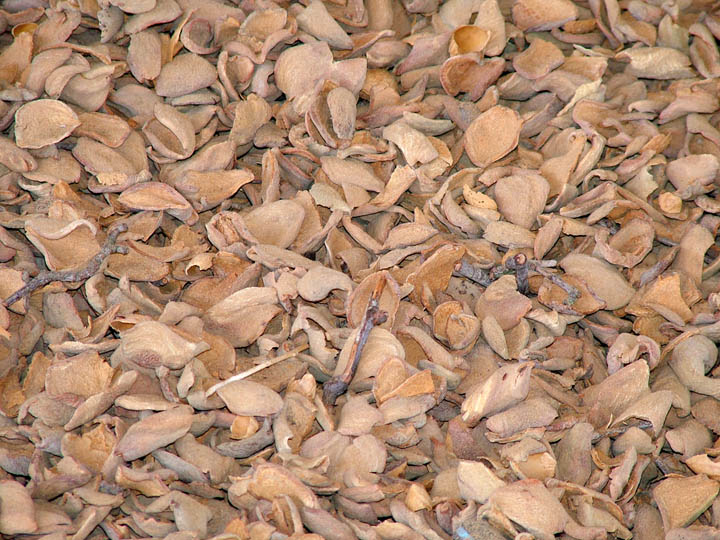
This year’s almond crop in San Joaquin County, Calif., looks “about average or maybe a little lighter than usual” on a per acre basis, reports Paul Verdegaal, University of California Cooperative Extension farm advisor for the county.
As growers move into harvest high gear, they are breathing sighs of relief since they experienced few problems controlling diseases and only sporadic problems with insect pests and spider mites. This means growers do not have an arm and leg in costs for this crop.
However, many growers had to shell out cash last winter to irrigate to make up for the lack of winter rain. “As growers turn off their water to prepare for harvest, the fields may dry out pretty quickly,” he notes. “Some orchards are showing some stress.”
Rod Stiefvate of Bakersfield, Calif. reports he is “quite enthusiastic” about his 2012 pistachio crop in orchards in Kern, Fresno, Madera and Tulare counties managed by his company, RTS Agribusiness. grows pistachios in Fresno, Kern, Madera and Tulare counties.
“More than likely, it will be a record year for production,” he adds “From all the reports I’ve seen, nut fill this year is very good and nut size looks to be a little above average. And even with the worldwide economic slowdown, prices will be very strong.”
In fact, in early August, Paramount Farms announced it will pay growers a minimum of $2.10 per pound with bonus for inshell pistachios and at least $2.75-per-pound for kernels.“Those are quite profitable prices, particularly in a big crop year,” Stiefvater says.
This season may end up as a two-shake walnut harvest for Stanislaus County grower Darren Ventura, who manages Hudelson Company’s tree nut production near Modesto, Calif.
He isn’t expecting any records to be broken when he harvests this year’s crop. “Some people are saying that the dry winter may ultimately reduce yields.”
Ventura expects to start this year’s walnut harvest, as usual, in the middle of October. Last year he had problems with yellowing of the nut meats in his Chandlers. That was attributed to water damage caused when the nuts remained in the wet field environment too long. As a result, he’s likely to run the shaker through his fields two different times this season.
“Normally, we get a lot windfall as harvest nears,” Ventura says. “So, this year we’ll just bump the trees with the shaker before picking up the windfall. Then we’ll come back with the shaker when we normally would to get the rest of the nuts.”
About the Author(s)
You May Also Like




